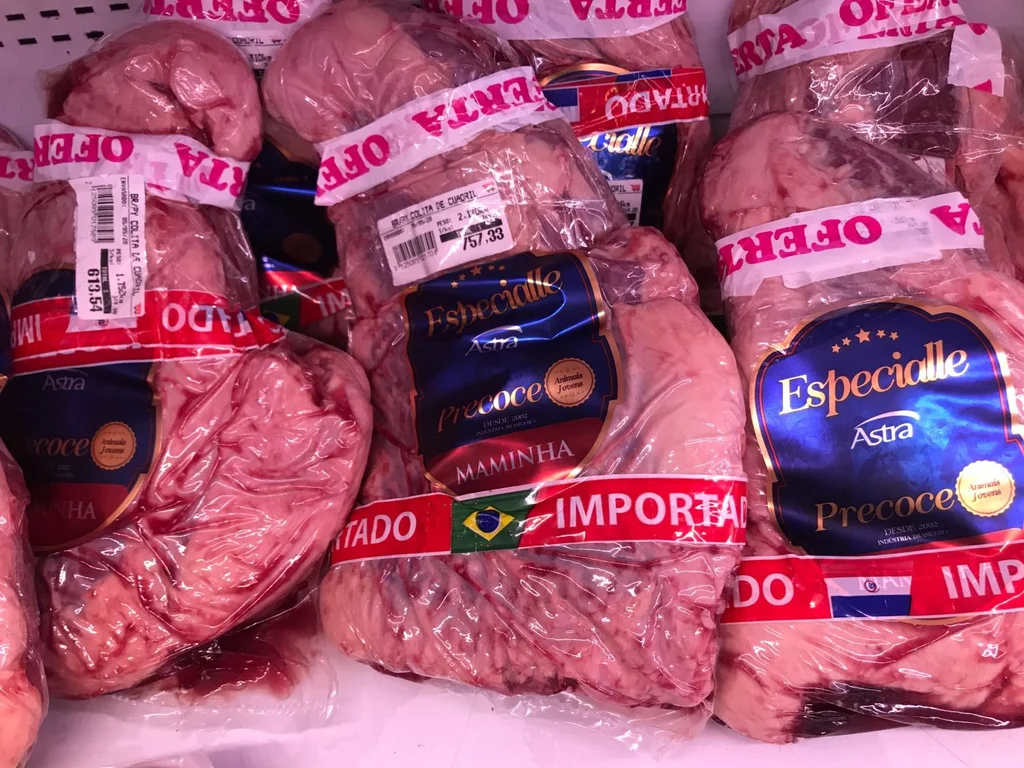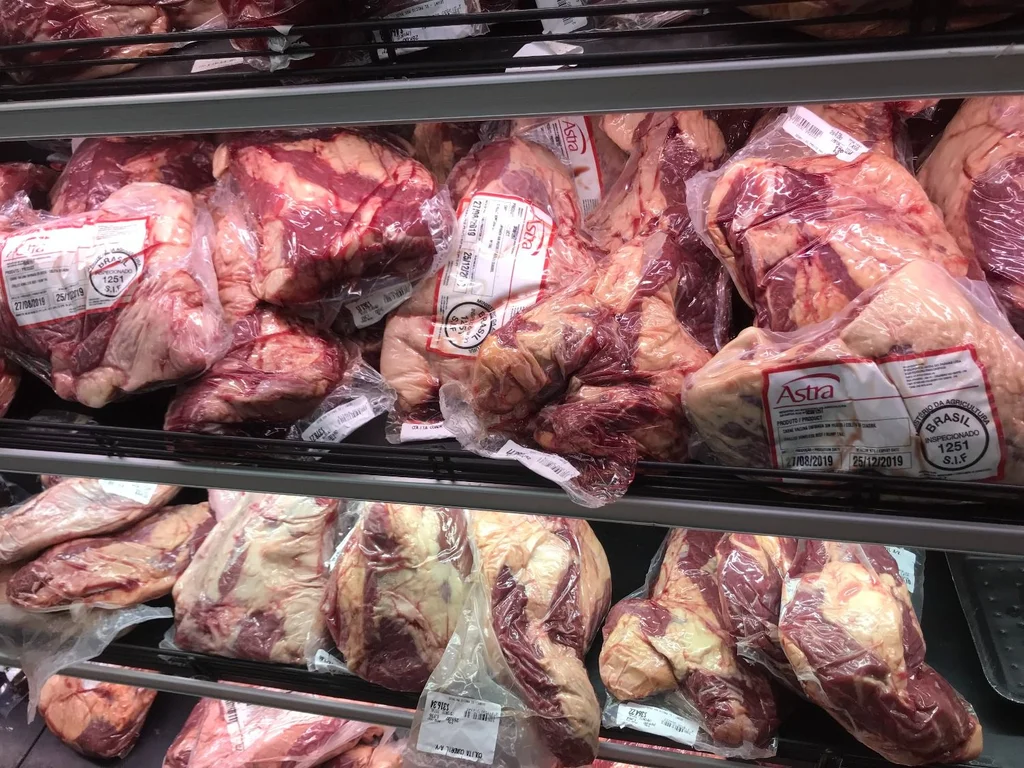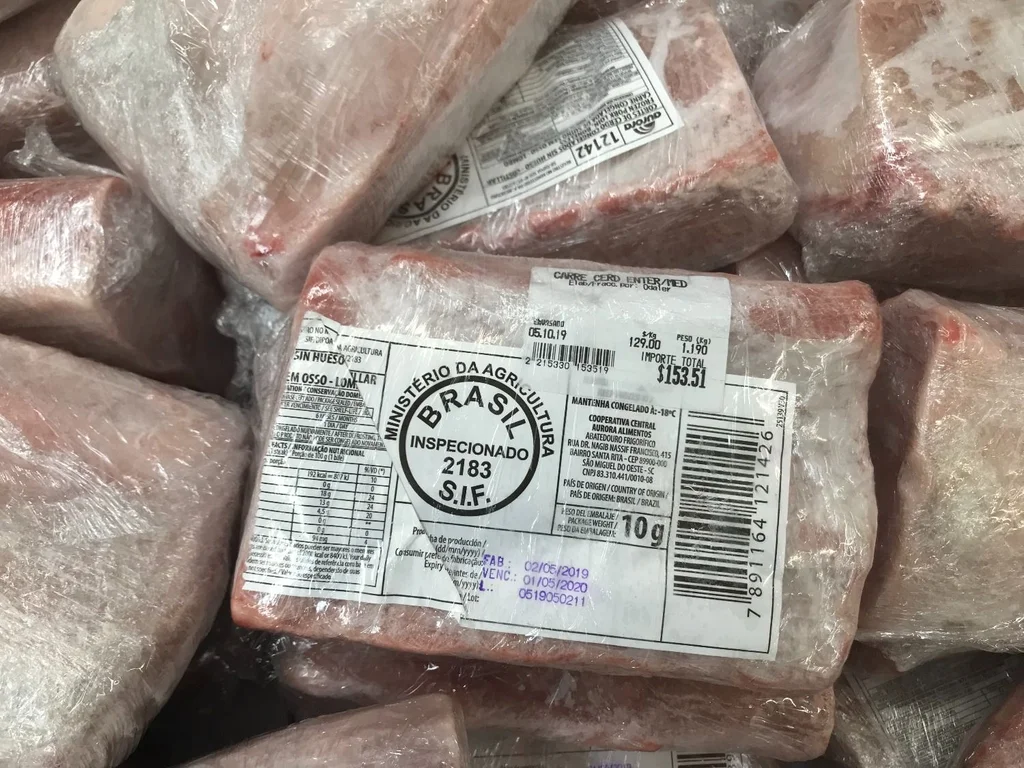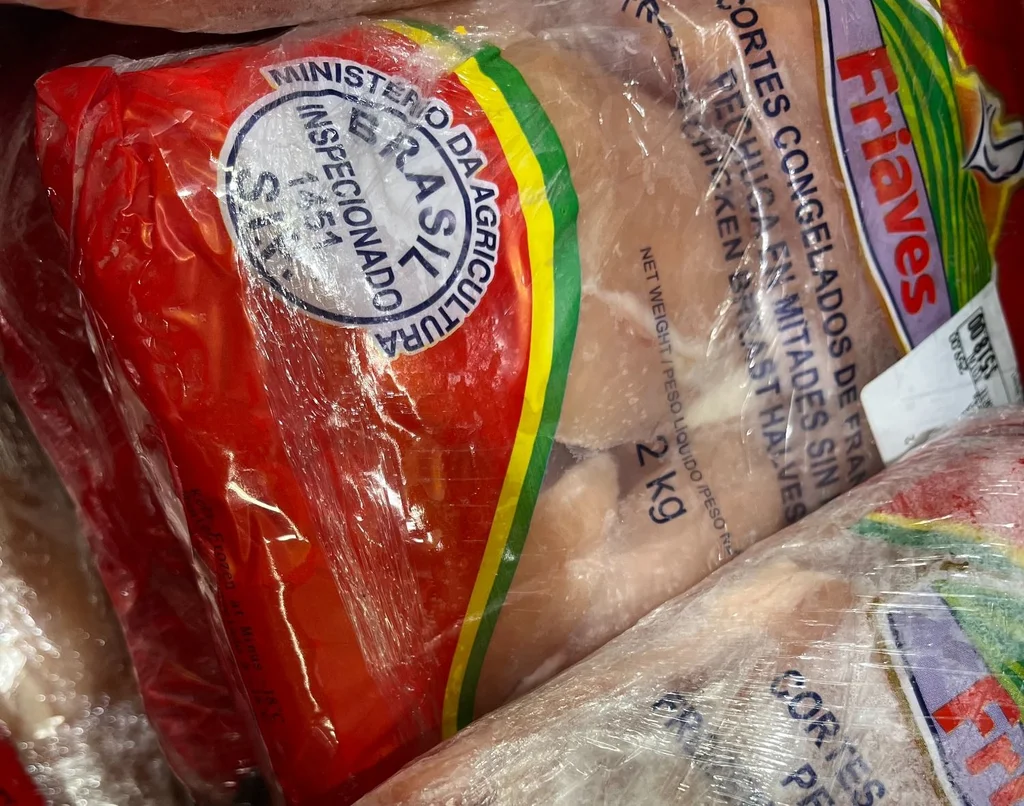So far in 2023 meat imports grew significantly, 32.3% compared to what happened in the first months of 2022based on the latest data updated by the National Meat Institute (INAC).
Considering beef, pork and poultry meat, 13,243 tons entered for US$ 44 millionat an average of US$ 3,328 per ton.
Of what was imported, 53.4% was pork (7,075 tons for US$17.2 million), 40.7% bovine (5,384 tons for US$24.9 million) and 5.9% poultry. (784 tons US$ 1.8 million).
Percentage-wise, the highest increase in the entry of meat into the country occurred in the poultry segment with 133.2%, followed by bovines with 45.2% and pork with an 18.6% increase.
Considering the invested value, a ton of bovine meat earned US$4,631 per ton on average, pork US$2,439 and poultry US$2,405.

John Samuelle
Brazilian beef.
butcher word
I don’t have the exact figures, but more meat has been imported here since 2004”, reflected Rafael Rodríguez, vice president of the Union of Meat Sellers (UVC). He pointed to The Observer a reality that frames that: “We export more beef at a higher price than what we pay to import beef”.
That, he said, allows it to continue to be supplied in the way that corresponds to the internal market.
Regarding poultry meat, he said that the majority arrive supreme, now especially from Brazil, when before it also entered from the United States and especially from Chile.
The arrival of supreme in significant volumes responds to the fact that local production was not enough and that the imported product reached lower values for the merchant and the consumer.
“The price of chicken had been going up, traditional butchers launched a promotion for legs at $99 a kilo with products imported from Brazil and the United States and the price of chicken stopped rising, imports serve to regulate prices, it ends up being something healthy “, considered.
He added that “a lot of pork has been imported for a long time, thanks to imports the consumption of pork went from about 2 kilos a few years ago to about 18 kilos now, maybe something more, because the price of pork imports that arrives from Brazil is a very competitive price, accessible to people”.

John Samuelle
Brazilian beef.
The provenances
bovine meat
- Brazil: 4,238 tons at an average of US$ 4,754.
- Paraguay: 1,146 tons at an average of US$ 4,176.
pork meat
- Brazil: 16,348 tons at an average of US$ 2,429.
- Paraguay: 726 tons at an average of US$2,700.
- Denmark: 79 tons at an average of US$ 2,917.
- Chile: 64 tons at an average of US$1,810.
- Spain: 41 tons at an average of US$ 3,242.
poultry meat
- Brazil: 412 tons at an average of US$ 2,410.
- Chile: 211 tons at an average of US$3,175.
- United States: 161 tons at an average of US$ 1,256.

John Samuelle
Pork rack, frozen, Brazilian.
The cuts
In beef, 59.5% of what entered were rear quarters, 26.5% front cuts and 12.3% trimmings (cuts), to name the main products; in pork meat, 100% of what was entered were frozen cuts; and in poultry meat, all that was imported were pieces.

John Samuelle
Frozen supreme, from Brazil.
After a year of strong rise
During 2022, the last completed annual exercise, 81,832 tons were imported considering the three meats, for US$280,813,000 and an average of US$3,432 per ton.
Last year, compared to 2021, it showed a 13.7% growth in imported meat, measured in tons.
















